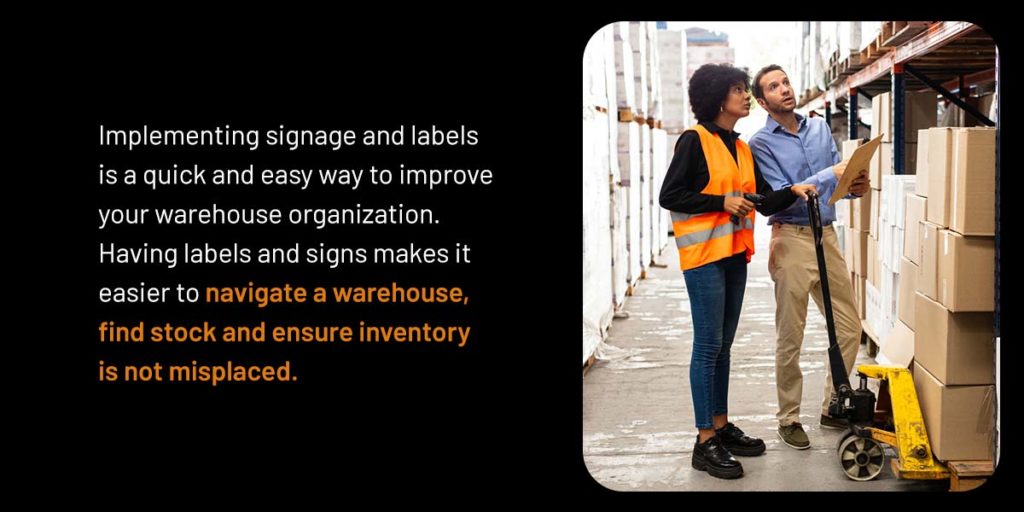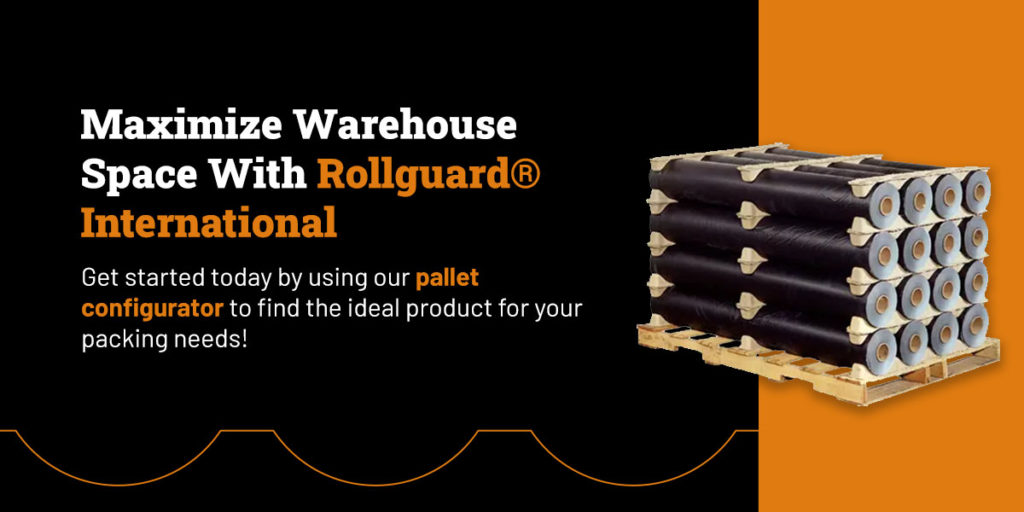6 Tips for Warehouse Management & Organization
Over time, your warehouse can become cluttered and ineffective as you focus on various other essential aspects of your business. This is bound to happen, as changes in consumer patterns, staff turnover and other related factors can lead to procedures being overlooked or forgotten.
Fortunately, you can organize your warehouse by implementing new systems and developing effective warehouse designs. Below are a few tips and ideas to help you learn how to organize your warehouse.
- Keep Your Warehouse Clean
- Optimize Your Floor Plan
- Use Labels and Signage
- Maximize Space
- Use a Warehouse Management
- Perform Regular Maintenance and Inspections
1. Keep Your Warehouse Clean
Clutter can accumulate throughout your warehouse during the day, leading to blocked aisles and unsafe working conditions. Items like waste, unattended equipment and other debris can hinder your employees’ workflow and disrupt your organizational system.
At the end of every day, make it a habit to clear out any clutter, pick up any waste and move equipment into its proper storage space. Schedule regular deep cleans to remove overlooked debris. Teach your staff about the importance of cleanliness. Encourage them to pick up as they go, even if the waste was there before they went to that section.
A clean warehouse makes organization easier because employees can quickly move around and see items. It is also safer to work in a clean warehouse, as there are fewer obstacles that can cause accidents or harm employees. As an additional benefit, a clean warehouse may also improve worker productivity. Most employees prefer working in a clean environment thanks to fewer distractions.
2. Optimize Your Floor Plan
It is crucial that you develop a floor plan for your warehouse. A floor plan can help turn a messy and inefficient warehouse into a seamless and efficient workplace.
Create a Simpler Warehouse Route
Your warehouse plan will be based on your unique needs, though one point that should be the same across warehouses is having an easy-to-follow route between departments.
You should be able to draw a line from your receiving area to inventory management to the picking, packing and shipping departments. If the lines intersect at any stage, it may be a sign your warehouse space needs to be optimized to improve efficiency.
Organize Similar Products
Further, group and place products accordingly. Faster-moving products should be easy to reach and close to the front to help reduce the time spent searching for them. Analyze your sales and take note of what products are commonly sold together.
Store them near each to make it easier for staff to pick orders. Seasonal or slower-moving items can be placed higher on racks or near the back of your warehouse. Ensure every product has a place and that it can be reached.
Give Everything a Designated Spot
Remove any unnecessary debris from the floor, such as unused pallets, equipment and stock. The fewer obstructions on the floor, the easier and faster it is for employees to move around your warehouse.
Ensure everything in your warehouse has a designated place and items are returned once used. Having a place for everything makes finding stock quicker and easier. If employees know where things belong, they are less likely to leave them lying around the warehouse.
3.Use Labels and Signage
Implementing signage and labels is a quick and easy way to improve your warehouse organization. Having labels and signs makes it easier to navigate a warehouse, find stock and ensure inventory is not misplaced. You can also enhance the safety of your warehouse by labeling height restrictions and putting warnings up for employees to follow.
Ensure all products are labeled correctly and signage is placed throughout the warehouse where it makes sense for employees. Use large, legible fonts and ensure nothing is blocking them. Arrows can remind workers of the flow of the warehouse when used correctly. Add instructions to equipment or areas to remind people what to do and where.
4. Maximize Space
One of the best ways to maximize the space in your warehouse is by properly stacking pallets. This is easy to do when the products are regular square or box shapes. However, products with rounded or irregular shapes can be more challenging to pack and may end up wasting space. Try to find ways to stack irregularly shaped products in a way that gives you more warehouse space.
For example, round products are typically stacked in a pyramid. This method is inefficient, as pyramids are prone to falling over and need more vertical space. More pallets are required to stack round inventory than the same amount of square or rectangular products. As a solution, stacking round stock in a cube formation can save space and make your warehouse safer.
You can use roll cradles to stack cylindrical products in a cube formation. Roll cradles from Rollguard® EU have several benefits for your warehouse, including:
- Securing inventory and preventing products from rolling
- Freeing up floor and pallet space
- Lowering shipping and warehousing costs
- Improving warehouse safety
- Being recyclable
5. Use a Warehouse Management System
A warehouse management system (WMS) supports many of your warehouse organization ideas. A WMS can help you track and classify inventory, determine proper storage techniques and monitor sales in real-time.
All of this data is essential in optimizing the layout and workflow of your warehouse. It also reduces the number of errors in inventory management, dispatching and other crucial warehouse processes. A WMS can also determine the best place for products in your warehouse so that you can utilize space better.
6.Perform Regular Maintenance and Inspections
Managing your warehouse requires a lot of equipment, from computers to forklifts to scanners. Implementing a maintenance and inspection schedule for everything in your warehouse can help it continue to run efficiently.
Having to stop receiving or dispatching orders because of faulty equipment can slow down employees, resulting in lower productivity. Regular inspections and maintenance can also save you money in the long run. You can save on costly repairs and downtimes later by addressing issues as they appear.
It is also important to inspect warehouse areas to ensure you meet all regulatory standards. Damaged, faulty and missing equipment can lead to dangerous working conditions. Following an inspection and maintenance schedule can prevent several issues and help keep your warehouse running smoothly.
Maximize Warehouse Space With Rollguard®
Effective warehouse designs, the right software and streamlined packing can help you optimize your warehouse. An optimized warehouse has more space for stock, creates a safer environment, improves employee productivity and increases output. Rollguard® EU’s roll cradles are an innovative and effective way to store cylindrical inventory while maximizing space.
We offer numerous roll cradles that vary by size, design and material to suit a wide range of applications. Get started today by using our pallet configurator to find the ideal product for your packing needs!


Leave a Reply